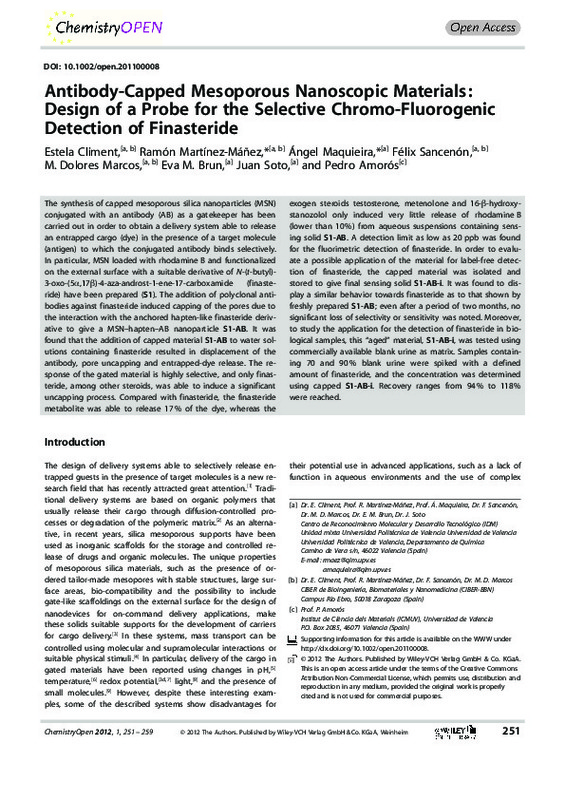JavaScript is disabled for your browser. Some features of this site may not work without it.
Buscar en RiuNet
Listar
Mi cuenta
Estadísticas
Ayuda RiuNet
Admin. UPV
Antibody-Capped Mesoporous Nanoscopic Materials:Design of a Probe for the Selective Chromo-FluorogenicDetection of Finasteride
Mostrar el registro completo del ítem
Climent Terol, E.; Martínez Mañez, R.; Maquieira Catala, Á.; Sancenón Galarza, F.; Marcos Martínez, MD.; Brun Sánchez, EM.; Soto Camino, J.... (2012). Antibody-Capped Mesoporous Nanoscopic Materials:Design of a Probe for the Selective Chromo-FluorogenicDetection of Finasteride. ChemistryOpen. 1:251-259. https://doi.org/10.1002/open.201100008
Por favor, use este identificador para citar o enlazar este ítem: http://hdl.handle.net/10251/29641
Ficheros en el ítem
Metadatos del ítem
| Título: | Antibody-Capped Mesoporous Nanoscopic Materials:Design of a Probe for the Selective Chromo-FluorogenicDetection of Finasteride | |
| Autor: | Amoros del Toro, Pedro | |
| Entidad UPV: |
|
|
| Fecha difusión: |
|
|
| Resumen: |
[EN] The synthesis of capped mesoporous silica nanoparticles (MSN)
conjugated with an antibody (AB) as a gatekeeper has been
carried out in order to obtain a delivery system able to release
an entrapped cargo (dye) in ...[+]
|
|
| Derechos de uso: | Reconocimiento - No comercial (by-nc) | |
| Fuente: |
|
|
| DOI: |
|
|
| Editorial: |
|
|
| Versión del editor: | http://onlinelibrary.wiley.com/doi/10.1002/open.201100008/pdf | |
| Código del Proyecto: |
|
|
| Agradecimientos: |
Financial support from the Spanish Government (project MAT2009-14564-C04-01) and the Generalitat Valenciana (Spain) (projects PROMETEO/2009/016 and PROMETEO/2010/008) is gratefully acknowledged. E. C. thanks the Minesterio ...[+]
|
|
| Tipo: |
|









